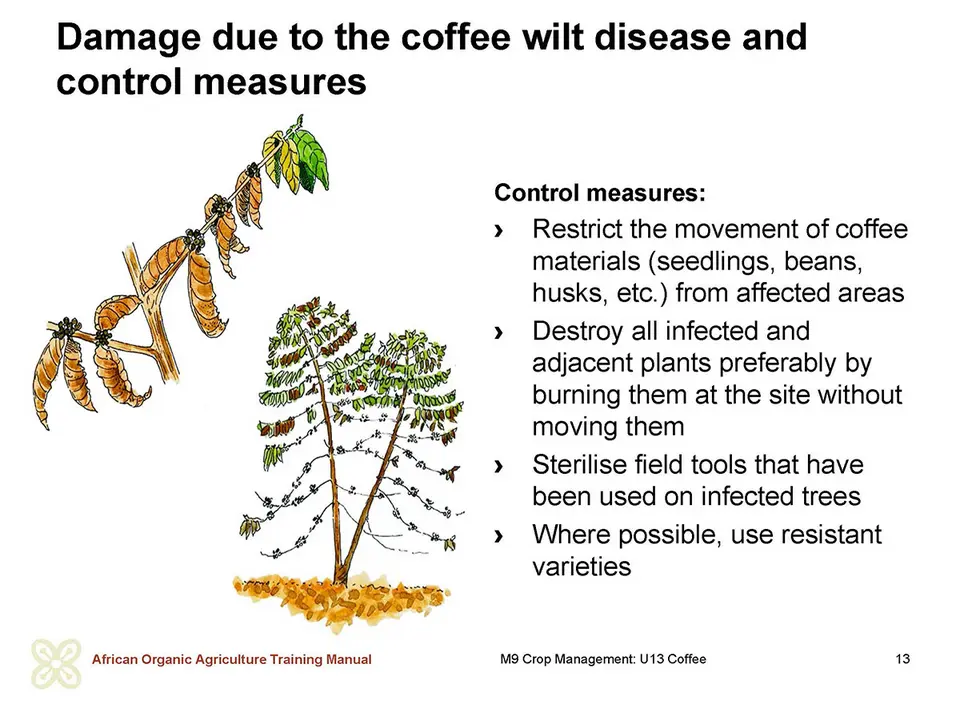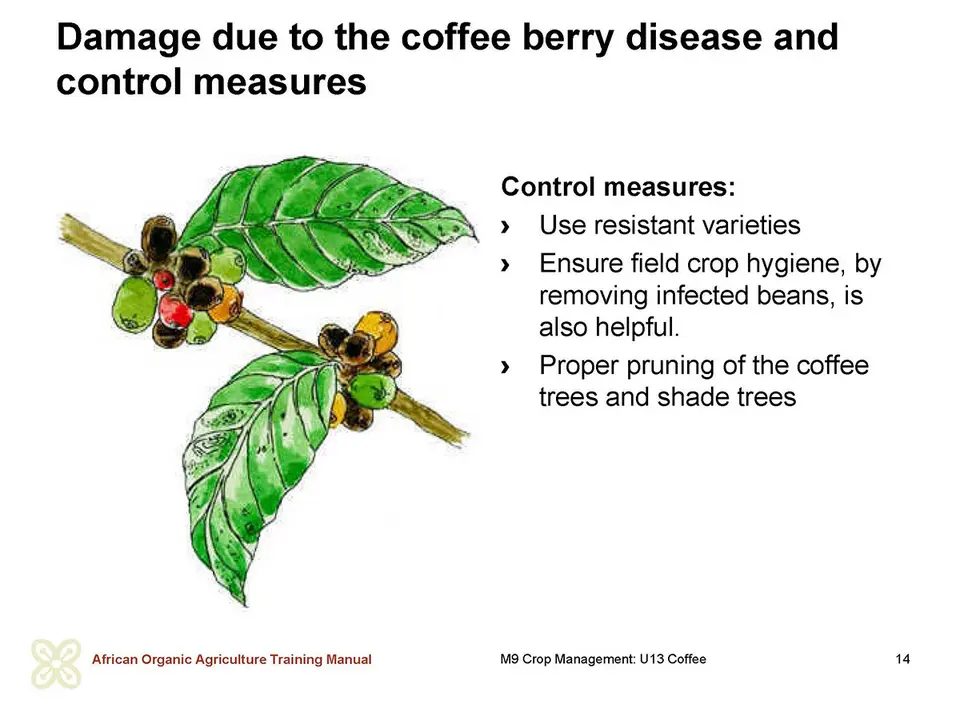Effective disease management
Most of the important coffee diseases are caused by fungus, for example, the coffee wilt disease, coffee leaf rust, coffee berry disease, coffee bark disease and the brown eye spot. The same type of pathogen implies that similar approaches to management of these diseases can be applied.
Effective management of these coffee diseases starts with the choice of suitable varieties for the local climatic conditions. Disease resistant varieties, where available, should be chosen. Resistant varieties to the coffee wilt disease, coffee berry disease and the coffee leaf rust are available in many coffee producing countries. Farmers should therefore contact a local extension officer or research station for proper advice on resistant varieties and healthy planting material for a given area.
Good cultural management practices are also necessary in order to enhance the ability of the coffee trees to tolerate and limit infection. For example:
- Soil fertility improvement to produce stronger trees.
- Pruning and de-suckering to increase airflow and reduce the humidity around the plant.
- Proper sanitation by ensuring infected plants or parts are removed and destroyed. Materials and equipment should not be moved from infested fields to healthy ones.
- Nursery plants can be protected by routine sprays with a protective, copper-based fungicide (e.g. Bordeaux mixture or Copper oxychloride). However, such sprays must be approved by the certifier in case of certified organic coffee production.
Managing pests and diseases in coffee requires regular scouting of the coffee fields to identify infections early. This gives the farmer enough time to intervene before much damage is done. The coffee wilt disease and the coffee berry disease have been highlighted as the most devastating diseases in most coffee producing areas in Africa.
Coffee Wilt Disease
Also known as ‘fusarium wilt’ or ‘tracheomycosis,’ coffee wilt disease is the most destructive coffee disease and can lead to 100 % yield losses. It affects Arabica and Robusta coffee as well as wild coffee species. It is a vascular wilt disease caused by the fungus Fusarium xylarioides. The first signs of the disease include yellowing, folding and inward curling of the leaves. The leaves then dry up and become brown and eventually drop off, leaving affected trees completely leafless. The disease spreads when infected trees are dragged through the garden for use as firewood, fencing, or left in the garden. It also spreads through contaminated tools, human beings or soil that gets into contact with healthy plants.
The control of this disease requires strict quarantine measures, involving restrictions on the movement of coffee materials (seedlings, beans, husks, etc.) from affected areas, destroying all infected and adjacent plants preferably by burning them at the site without moving them. Field tools that have been used on infected trees should be sterilized by flaming fire over the the metal part before using them on other fields.
In some areas, resistant varieties have also been produced so it is therefore advisable to contact the local extension officer or research station for more information.
Coffee berry disease (CBD)
CBD is caused by Colletotrichum kahawae and is a major constraint for mainly Arabica coffee cultivation in Africa. The disease is specific to green or immature berries and can lead to 20 to 30 % harvest losses. It causes sunken lesions, which spread to cover the berry and the inside bean may also be affected. Older coffee will have higher disease pressure due to the build-up of primary inocula in the bark.
To control this disease, resistant varieties are widely available and should be planted to replace traditional susceptible varieties. In addition, field crop hygiene by removing infected beans is also helpful.


 tap and then scroll down to the Add to Home Screen command.
tap and then scroll down to the Add to Home Screen command.